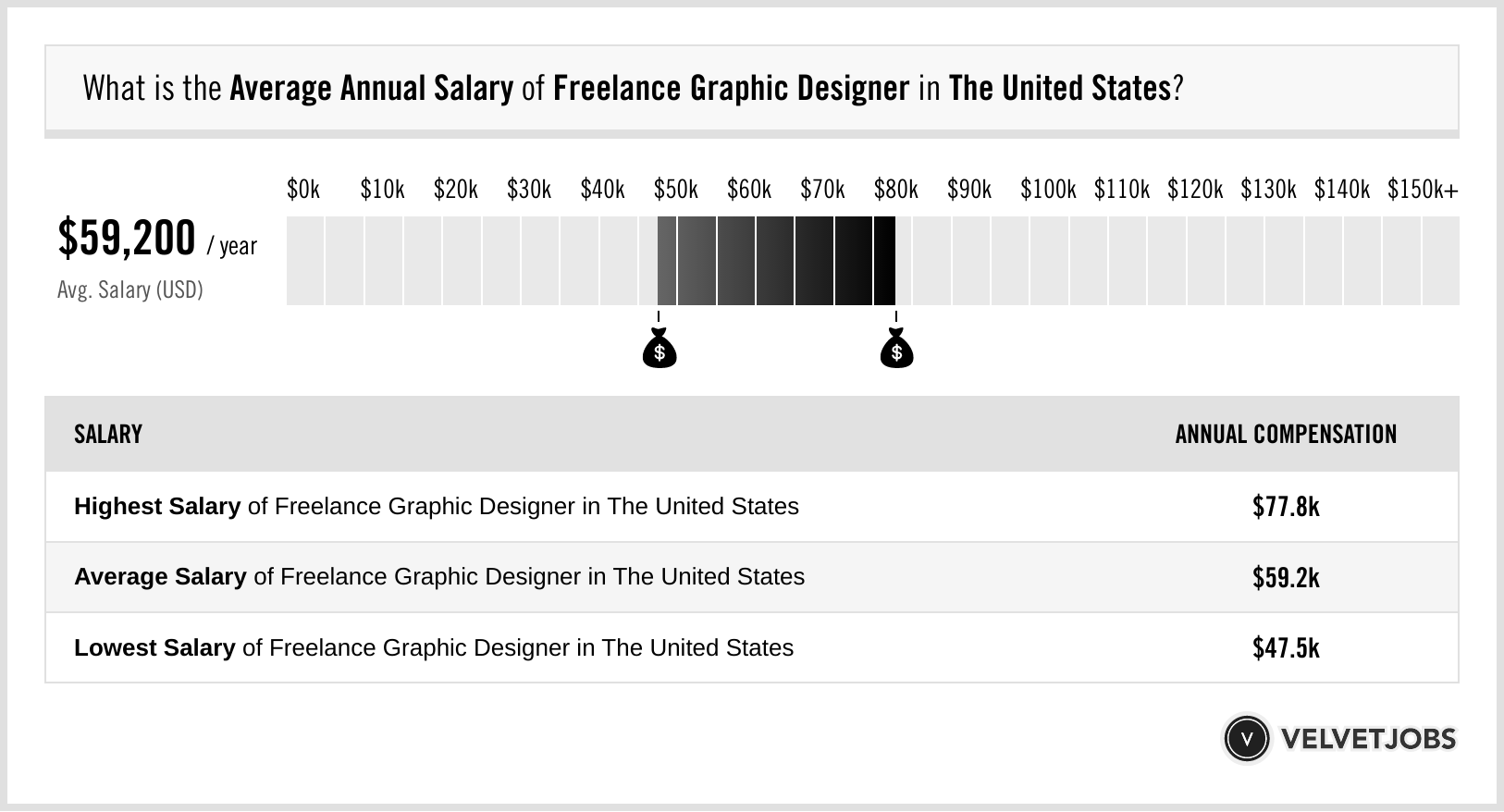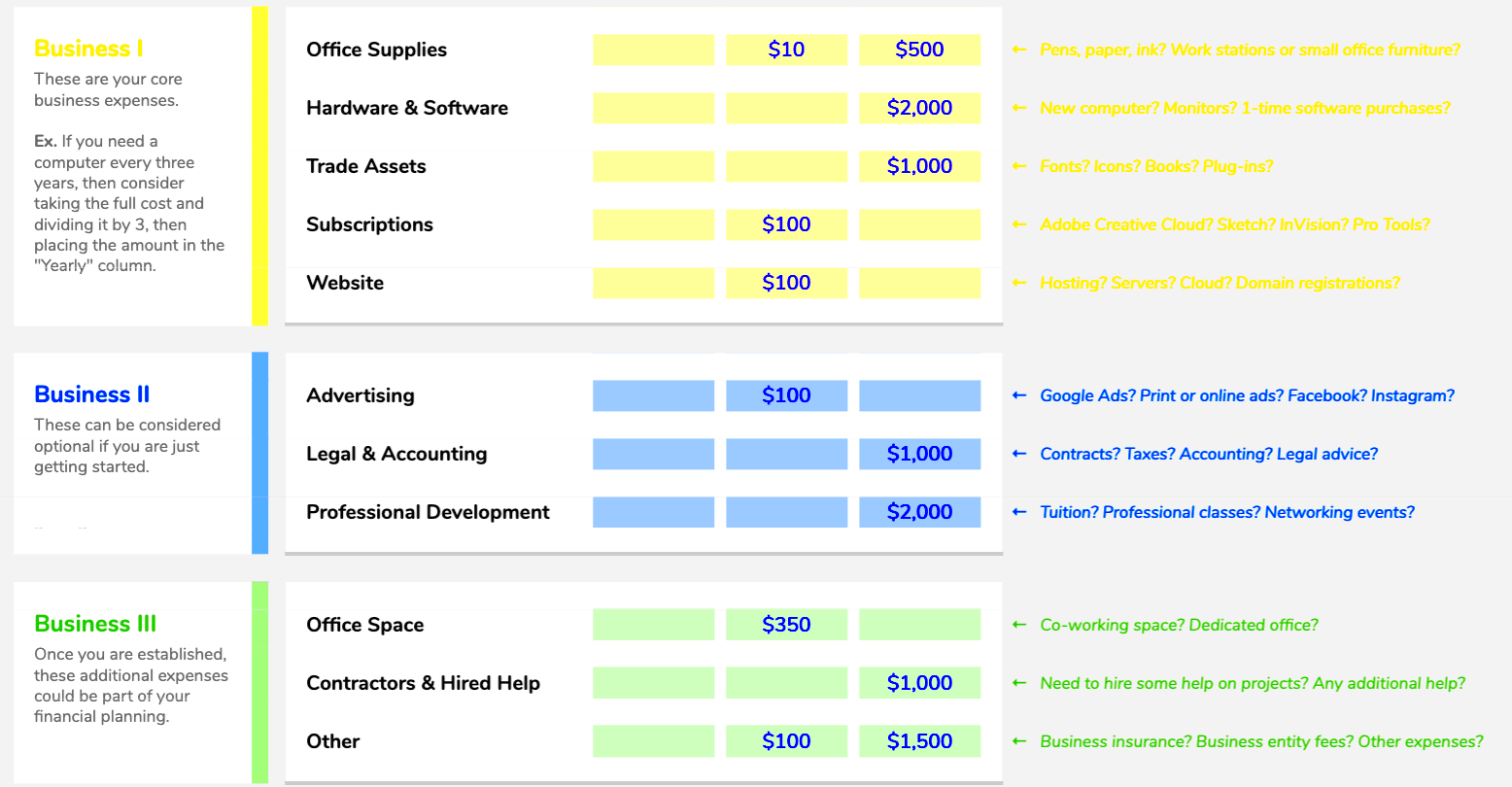Freelance artists play an important role in the creative industry. Their work spans from graphic design to illustration, photography, and even digital art. Unlike salaried employees, freelance artists earn based on their projects, clients, and the demand for their skills. Earnings can vary widely, depending on factors like experience, industry niche, and how well they market themselves. Understanding how much freelance artists make annually can help those in the field better plan their career paths and financial goals.
Factors Affecting Freelance Artists' Earnings

Several factors influence how much freelance artists can earn in a year. These include:
- Experience Level: Artists with more experience typically command higher rates for their services.
- Specialization: Certain niches, like UX design or high-end illustration, tend to earn more compared to general art categories.
- Client Base: Having a loyal, high-paying client base can significantly increase an artist's income potential.
- Geographic Location: Freelancers in larger cities with more demand for creative services may earn more.
- Marketing Skills: Artists who effectively market their services online or through social media can attract more clients and increase earnings.
- Working Hours: The more hours an artist dedicates to their craft, the higher their income potential, assuming they can find consistent work.
Artists must balance these factors to maximize their earnings, often combining different income streams and strategies.
Also Read This: How to Grow on Fiverr: Tips for Success
Average Annual Earnings for Freelance Artists

The earnings of freelance artists can vary greatly, but on average, they can expect to make between $30,000 and $70,000 annually. However, this number can be much higher for artists with specialized skills or established reputations. Here is a breakdown of average earnings for various types of freelance artists:
| Type of Artist | Average Annual Earnings |
|---|---|
| Graphic Designers | $40,000 - $70,000 |
| Illustrators | $35,000 - $60,000 |
| Photographers | $25,000 - $55,000 |
| 3D Artists | $50,000 - $80,000 |
| UX/UI Designers | $60,000 - $100,000 |
While these are average figures, individual earnings can be much higher depending on the artist's expertise, portfolio, and the type of clients they attract. Additionally, artists who combine freelance work with teaching or selling digital products (like tutorials or printables) can increase their income.
Also Read This: How to Fix a Profile Image in Fiverr
How to Increase Earnings as a Freelance Artist
Increasing earnings as a freelance artist requires more than just creating great art. It involves building a solid reputation, marketing your services effectively, and continuously seeking ways to improve your craft. Here are some tips to help boost your income:
- Build a Strong Portfolio: A well-curated portfolio that showcases your best work is essential. Make sure it’s easy for potential clients to view your range of skills and past projects.
- Set Competitive Rates: Research what others in your field charge. Setting competitive yet sustainable rates will ensure you are not undervalued.
- Offer Value-Added Services: Adding extra services, such as offering rush orders or extended rights for usage, can help increase your earnings from each client.
- Expand Your Skill Set: Continuously improve by learning new techniques or tools. A broader skill set allows you to take on a wider range of projects, increasing your earning potential.
- Network and Build Relationships: Word-of-mouth recommendations are powerful. Building strong relationships with clients can lead to repeat business and referrals.
- Use Multiple Income Streams: Don’t rely solely on one source of income. Explore additional options like selling digital products (e.g., art prints, templates, or courses) or offering freelance consulting services.
By implementing these strategies, freelance artists can increase their overall income while also building a sustainable career in the long run.
Also Read This: Best Fiverr Sellers for Music Production in 2024
Key Platforms for Freelance Artists to Earn Income
There are several platforms that cater specifically to freelance artists, offering opportunities to connect with clients, showcase your work, and secure paid projects. Some of the top platforms include:
- Fiverr: A popular platform where artists can offer services like logo design, digital art, or illustrations. Fiverr allows you to set your own rates and gain exposure to a large client base.
- Upwork: A marketplace for a wide variety of freelance jobs, including creative fields like graphic design and illustration. Upwork allows artists to bid on projects, giving them access to global clients.
- Behance: A platform for showcasing portfolios and gaining exposure to potential clients, often used by high-end designers and illustrators.
- Dribbble: A creative community where artists can share their work and find freelance opportunities, especially for digital artists and graphic designers.
- 99designs: A platform focused on design work, where artists can participate in design contests or be hired for individual projects.
- Creative Market: If you create assets like fonts, illustrations, or templates, you can sell them directly on Creative Market, a platform for digital design assets.
By leveraging these platforms, freelance artists can increase their visibility, build a client base, and earn consistent income from their craft.
Also Read This: How Does a Buyer Approve a Custom Offer on Fiverr?
Challenges Faced by Freelance Artists in Earning Consistent Income
While freelancing offers great freedom, it also comes with its challenges, especially when it comes to earning a consistent income. Some of the most common obstacles include:
- Unpredictable Workload: Freelance artists may experience periods of feast or famine. At times, the work may pour in, while at other times, it may be scarce. This inconsistency can make it hard to plan financially.
- Client Payment Delays: Some clients may delay payments, or even refuse to pay altogether. This can be frustrating, especially if you rely on timely payments to cover expenses.
- Competition: The freelance market is highly competitive, and standing out among many talented artists can be difficult. This competition can lead to clients undervaluing your work.
- Managing Taxes and Business Expenses: Freelancers are responsible for managing their taxes, setting aside money for business expenses, and handling administrative tasks, all of which can be time-consuming and overwhelming.
- Burnout: Constantly hustling to find clients, meet deadlines, and manage the business side of freelancing can lead to burnout. Without proper work-life balance, artists may find themselves exhausted or disengaged from their work.
While these challenges are common, successful freelance artists learn to navigate them with the right strategies, like setting clear payment terms, building a diverse client base, and maintaining a healthy work-life balance.
Also Read This: Why I Am Unable to Join Fiverr
How to Build a Sustainable Career as a Freelance Artist
Building a sustainable career as a freelance artist goes beyond just landing a few projects. It requires long-term planning, consistency, and adaptability to the ever-changing market. Here are some steps to help you create a lasting and successful career in freelancing:
- Invest in Continuous Learning: Stay updated with the latest trends, tools, and techniques in your field. This could mean taking online courses, attending workshops, or following industry leaders.
- Diversify Your Income Streams: Don’t rely solely on client commissions. Consider selling digital products like art prints, tutorials, or even creating online courses. Diversifying your income streams ensures you’re not vulnerable to the fluctuations of client-based work.
- Build a Personal Brand: Having a strong personal brand helps you stand out in a competitive market. This could include having a unique style, maintaining a consistent presence on social media, and engaging with your audience.
- Focus on Client Relationships: Retaining clients is often more cost-effective than constantly finding new ones. Provide excellent customer service, communicate clearly, and always deliver high-quality work to encourage repeat business.
- Manage Your Finances Wisely: Set aside money for taxes, save for slow periods, and track your expenses. Good financial management is key to surviving the ups and downs of freelance work.
- Plan for the Long Term: Set both short-term and long-term goals. Whether it’s earning a specific amount, landing high-profile clients, or expanding your skillset, having a plan in place helps guide your career.
By following these steps and consistently putting in the effort, you can build a sustainable and rewarding freelance art career.
Also Read This: How to Write an Effective Fiverr Profile Description
FAQ About Freelance Artists' Earnings
If you're considering freelancing as an artist, you may have a few questions about how earnings work. Here are some commonly asked questions:
- What is the average income for a freelance artist? As mentioned earlier, it can vary significantly, but the average annual earnings range between $30,000 and $70,000, depending on your niche, experience, and how you market yourself.
- How do freelance artists get paid? Freelance artists can get paid through various methods, including PayPal, bank transfers, or payment platforms like Stripe or Venmo. Many platforms like Fiverr or Upwork also facilitate payments securely.
- Can I make a full-time income as a freelance artist? Yes, many freelance artists make a full-time income. It depends on how well you market your skills, maintain consistent work, and manage your business.
- How do I set my rates as a freelance artist? Research what others in your industry charge, consider your experience level, and assess the complexity of the work. Don’t undervalue yourself, but also ensure your rates are competitive.
- What happens if a client doesn't pay? It's important to set clear payment terms in your contracts. If a client doesn’t pay, follow up with reminders, and if necessary, consider using legal avenues or a collections service to recover your fees.
These FAQs help clarify some of the common concerns freelancers may face regarding their earnings and how to manage them effectively.
Conclusion: Maximizing Freelance Artists' Earnings
Maximizing earnings as a freelance artist is achievable with the right strategies and mindset. By focusing on continuous learning, diversifying income streams, and building strong client relationships, you can increase your income potential. However, it's crucial to remember that consistency is key. The more effort you put into improving your craft, marketing your services, and managing your business, the more likely you are to build a profitable, sustainable career. It’s not always easy, but with perseverance and smart strategies, freelance artists can turn their passion into a rewarding livelihood.




